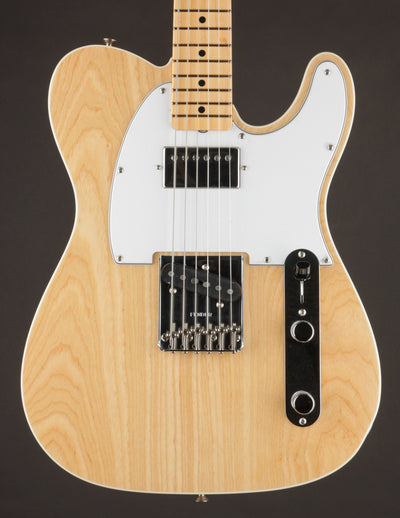If you’re drawn to the look and feel of student model or catalog-era guitars, but want something that delivers on every level—tone, playability, and build quality—this is it. A vintage soul wrapped in boutique execution.
Inspired by the process of reviving a vintage Harmony Rocket (see the Retro Mod listing for the full story), Glenn Nichols set out to put his own spin on this iconic student model style. The result? The Roswell—a fresh take that’s anything but a simple tribute.
While the Roswell nods to its mid-century roots, it also showcases Glenn’s elevated and refined skills. Chief among his innovations is use of a 25 1/2" scale, which enhances the articulate, chimey tones these guitars are beloved for. But getting the feel right is the real magic trick—it has to evoke the charm of a vintage student model without feeling overly refined, while still honoring Glenn’s boutique-level build quality.
To strike that balance, the Roswell features a flamed maple top and back, walnut sides, a figured mahogany neck with a Granadillo fingerboard, and a perfectly matched set of Novak Gold Foil pickups.
Plug it in, and you’re instantly in that classic zone: warm and punchy, with the roundness and sparkle you expect from a gold foil—but elevated in every way. We took it for a spin through our beloved Carr Super Bee and whether clean or pushed to edge-of-breakup tones, the Roswell stays articulate and expressive - and most importantly - and is a hell of a lot of fun.
Specs, woods, and finish aside, every great instrument ultimately answers one question: Do I want to keep playing this? Does it spark something? Does it have that elusive vibe—mojo, even? In the case of this guitar, the answer is a resounding yes.
Body
Hardware
Neck
Other
Brand Story
Retrograde Guitars are handmade by Glenn Nichols in a large Artist Studio space located in an historic textile factory in Pawtucket, Rhode Island.
The goal of Retrograde Guitars is to explore the potential of the electric laminate top guitar. The design draws from the early jazz boxes of the 30s and 40s, to the catalog guitars of the 50s and 60s. By using vacuum press technology, hand wound pickups, hand rubbed colors and home brewed varnishes, modern building methods are combined with old world lutherie.



































